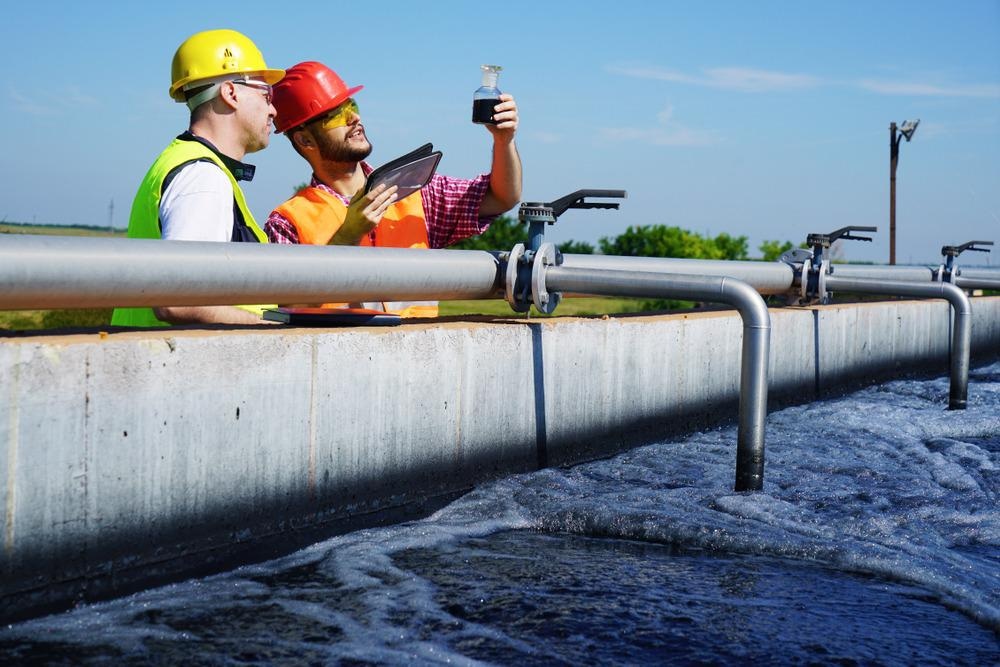Capacitive deionization (CDI) is being studied as a viable water purification technique to address the problem of freshwater scarcity. However, large-scale commercialization of CDI is limited due to the lack of a feasible intercalation material.

Study: Three-dimensional Prussian Blue Nanoflower as a High-Performance Sodium Storage Electrode for Water Desalination. Image Credit: Avatar_023/Shutterstock.com
To address this issue, a recent study published in the journal Separation and Purification Technology focuses on the development of 3D flower-like Prussian blue (PB) intercalation material for effective water treatment.
What is Capacitive Deionization (CDI)?
Due to its benefits of low cost, no additional pollutant creation, and simplicity of handling, capacitive deionization (CDI) has become a popular technique for the treatment of water in recent decades, particularly for purification and desalination.
The excited ions in a traditional CDI cell are transferred to the electrode with reverse polarity by utilizing a potential difference between two parallel diodes, ultimately capturing the ions by establishing electric double layers (EDLs) on the electrode material's surface.
Carbon compounds, including activated carbon, CNTs, carbon hydrogels, and graphite, are often employed as electrodes in CDI, but they have limited purification capacity and many reactive species. As a result, the commercialization of carbon electrodes on a large scale remains a huge concern, necessitating the production of high-efficiency electrode materials.
Intercalation Materials as Electrodes for CDI
Many attempts have been made to investigate highly efficient sodium-ion or chloride-ion storage technologies. CDI working electrode materials that differ from carbon composites are called intercalation materials, which retain ions via bidirectional redox processes. Since their interaction with ions can happen throughout the architecture and is not restricted by a specific surface area, these compounds often have a high purification efficiency with a low environmental impact.
Importance of Prussian Blue and its Analogues
Prussian blue (PB) and its equivalents (PBAs) have attracted much interest for their potential use in CDI applications. Large interfacial spaces for fast ion entry and removal are provided by the porous arrangement linked by a covalent bond, making PB an attractive candidate for CDI electrodes.
Filtration cells made up of nickel-based PB and iron-based PB electrodes have shown a high purification capacity for water treatment.
Despite its potential benefits, PB suffers from drawbacks such as low conductance and capacity loss. PB can be combined with highly conductive compounds (such as graphene hydrogels) to improve electrocatalytic efficiency and eliminate these flaws. While this method enhances performance, it also raises expenses and makes the procedure more difficult.
Morphology modification is an easy and successful method for improving CDI efficiency. Higher penetration dynamics and more electron-rich sites are achieved in the morphology of the electrodes by manipulating the synthesis conditions. The capacity decline induced by volume displacement during cycling is also reduced by a well-designed morphology.
Research Methodology
Iron-based Prussian blue is a common electrode material for CDI applications because of its inexpensive cost of raw materials, nontoxicity, and good electrical performance. In this work, the researchers used a simple hydrothermal approach to make 3D flower-like Prussian blue nanocrystals. The alcohol in the solution plays a critical function in creating the six-petal flower-like architecture during production.
The traditional hydrothermal process was used to make flower-like PB nanocrystals.
To begin, 1.6 g of polyvinylpyrrolidone and 1.25 g of sodium hexacyanoferrate were diluted in 150 mL of alcohol and distilled water and constantly agitated until a uniform and transparent solution was achieved.
This was then mixed with 3 mL of saturated H2SO4. The solution was placed in a Teflon-lined sterilizer and heated to 80 degrees Celsius for 6 hours. Lastly, the blue residue was centrifuged and rinsed with distilled water and alcohol numerous times to obtain PB nanoparticles.
Research Findings and Conclusions
The directed development approach was used throughout the fabrication process because the hydroxyl groups derived from alcohol adhered to the PB nucleus' margins and edges.
Flower-like PB contributed to the distinctive architecture and reduced size by presenting more electrocatalyst sites, decreasing the Na+ ion diffusion route, and enabling buffer space for volumetric displacement.
As a result, the desalination cell made up of flower-like PB electrodes provided improved distillation efficiency, a long lifespan, and lower energy consumption.
In summary, this research shows that flower-like PB is a promising material for use in CDI as an effective and power-saving working electrode. This study also serves as a benchmark for PB's potential in the field of eco-friendly energy production.
Continue reading: Could Nanotechnology be a Key Driver in the Future of Cleaner Lakes?
Reference
Gong, A. et al. (2021). Three-dimensional Prussian Blue Nanoflower as a High-Performance Sodium Storage Electrode for Water Desalination. Separation and Purification Technology. Available at: https://www.sciencedirect.com/science/article/abs/pii/S1383586621020372
Disclaimer: The views expressed here are those of the author expressed in their private capacity and do not necessarily represent the views of AZoM.com Limited T/A AZoNetwork the owner and operator of this website. This disclaimer forms part of the Terms and conditions of use of this website.